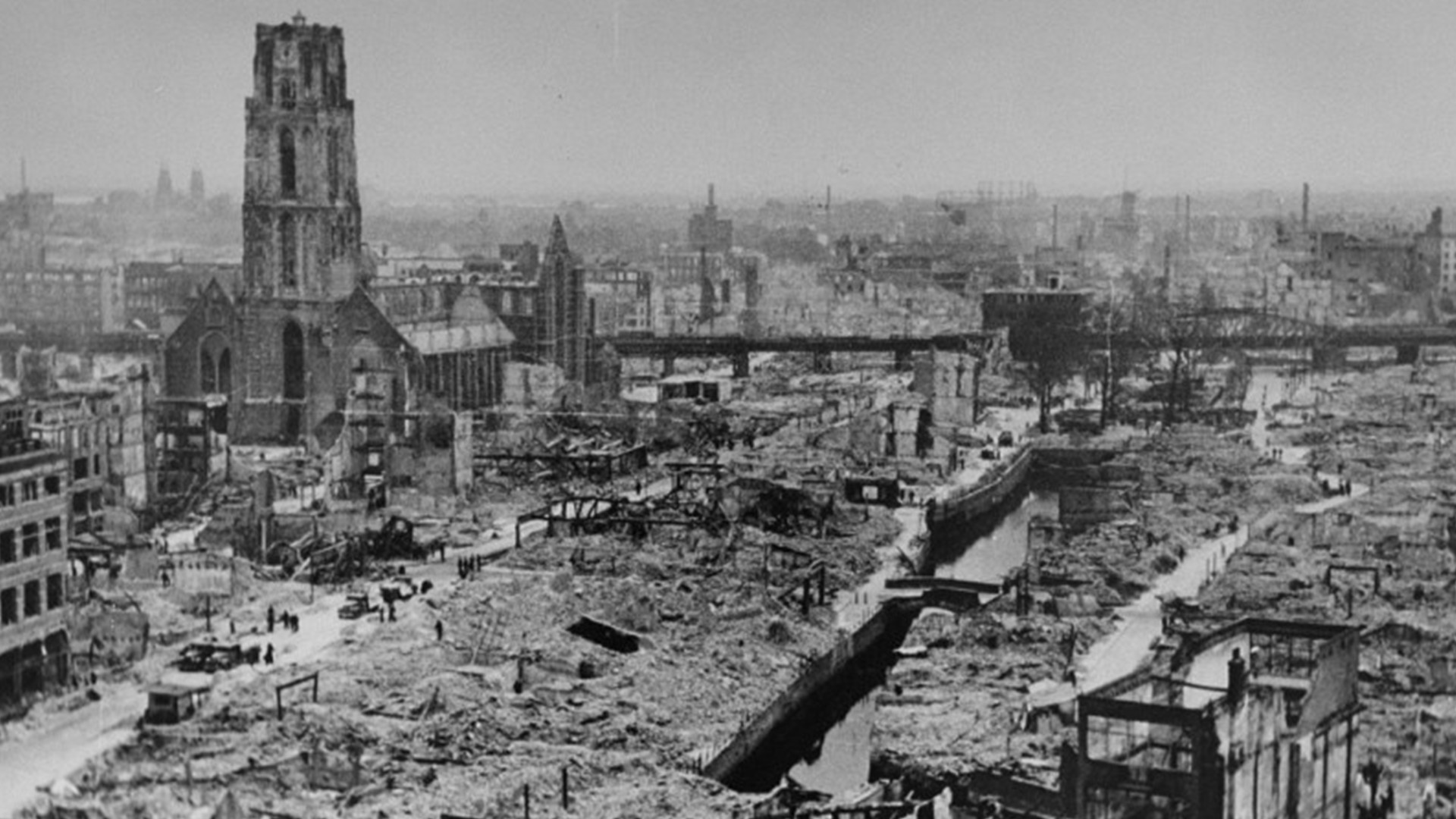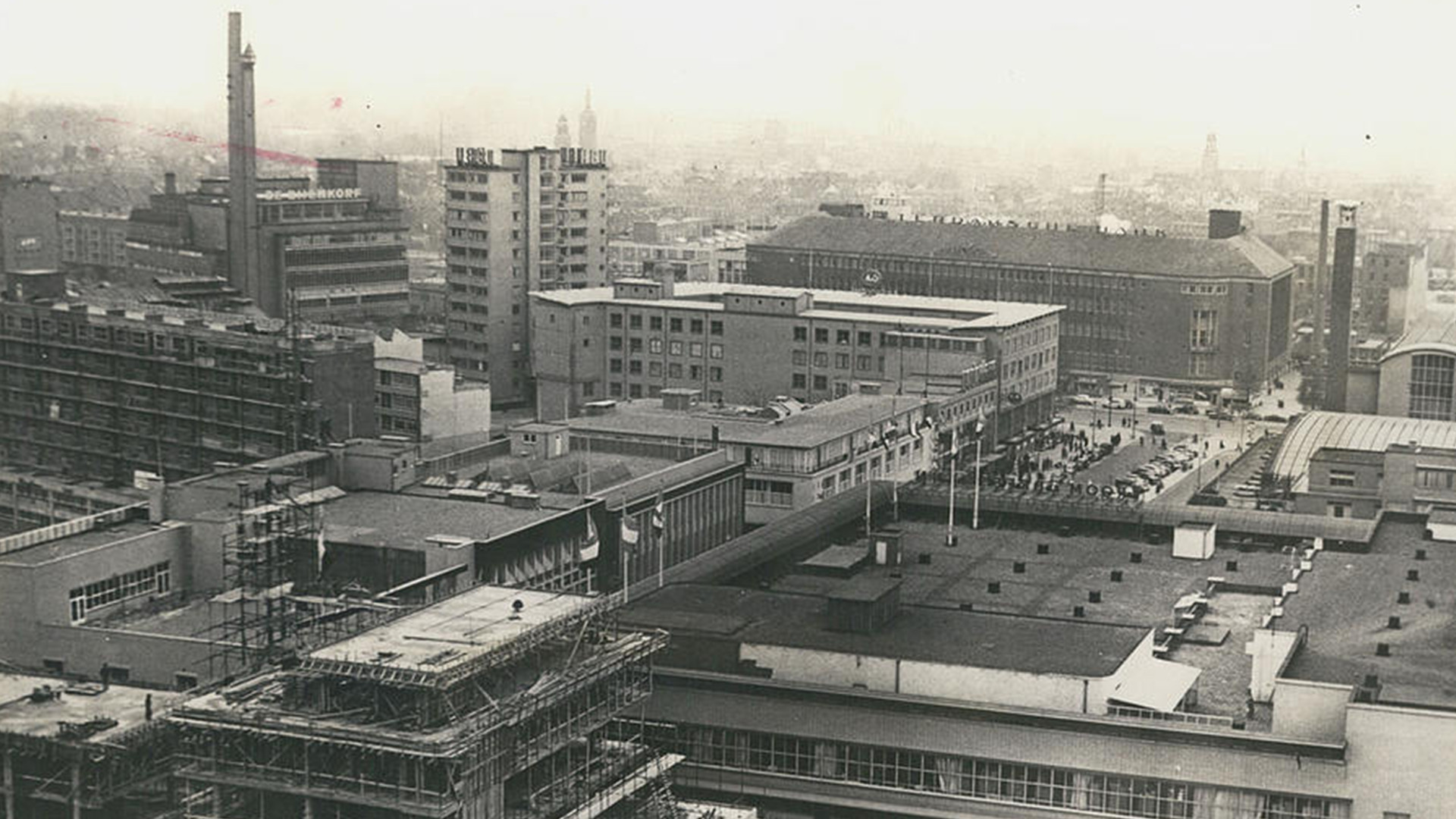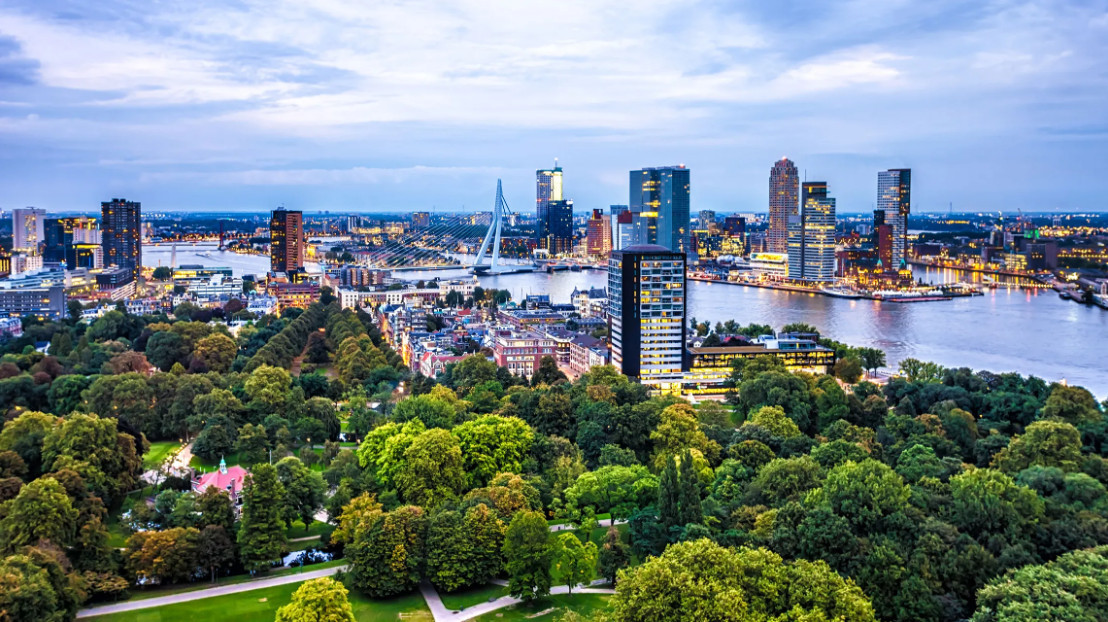We continue to launch a series of articles about the post-war reconstruction in other cities. The successful (and not only) experience of others will help us avoid mistakes and more effectively restore Ukraine. Wijnand Galema, a historian at Rotterdam Academy of Architecture, told us about the rebuilding of Rotterdam after the bombings.
Rotterdam was actively changing even before World War II. The avant-garde architects had worked here, and one of them was Jacobus Oud. He planned to build a huge residential quarter that combined rationalism and unusual ideas of neoplasticism in the mid-20s of the 20th century. Almost 300 houses, shops, a water plant, 2 warehouses, and a church were erected in the same style.
The city has been expanded in 20th-30th, so Rotterdam required greater traffic for even more. The center has retained its triangular shape, however wide boulevards and squares have appeared on the city map.
The German air force has bombed the city at the beginning of the war, on May 14, 1940. Rotterdam was immediately engulfed in fire, and people left their homes en masse. Nazi troops have destroyed 24,000 residential buildings and many other infrastructure facilities. 850 people died, 80,000 (15% of the local population) were left homeless.

Rotterdam after the bombings, May 1940 / Courtesy Instytut Pamieci Narodowej
First steps
The reconstruction began rapidly, just a few days after the bombings. The city was cleared from rubble and got rid of construction debris. Meanwhile, Rotterdamers haven't just cleaned up the city, but also planted cornfields in the place of wastelands. It allowed the residents to escape from hunger as of the food problem at that time.
The restoration of the city began with the construction of temporary housing and retail establishments. Design and comfort were taken care of even in that terrible situation, so part of the temporary structures were used until the late 50s.
Although many important buildings in Rotterdam have survived, the authorities have decided not to keep all of them. The historic entrance gate to the city (Delfsepoort), the city museum (Scheilandshuis), and the tower of St. Lawrence Church were completely left as they were. At the same time, the church itself was demolished to emphasize the scale of the destruction. Moreover, administrative objects, such as the town hall, the exchange house, the main post office, etc. have been preserved. The rest were demolished either immediately or later because they did not fit into the new basis of the city.

The reconstruction of Rotterdam / Keystone Press
The first restoration plan for Rotterdam was presented in 1941 by engineer Willem Gerrit Witteveen. That's what it was all about:
- the urban form was maintained, the circuit city remained constant and harmonious;
- the city plan was clear and rigorous;
- every free place had to be built up by something;
- the architecture is traditional Dutch;
- the road grid did not change much, however it expended;
Subsequently, the authorities have suspended work due to lack of resources, so the first plan was not fully implemented. Engineer Cornelis van Traa has developed the so-called “Basic Plan” in 1945, which was more flexible than the previous one. The authorities have adopted this plan already in 1946. Its basic principles were as follows:
- the urban form was maintained, but zoning was envisaged;
- the city plan was free, open to change, in addition, there remained free areas for future ideas;
- modern and functional architecture;
- the streets became a network of transport routes;
The “Basic Plan” have envisaged that the city center would be mainly trade and business activity. Industry was transferred to special areas, as well as housing, that was situated on the outskirts of Rotterdam at that time.
Rotterdam was dominated by optimism and euphoria from 1945 to late 60s. The authorities have actively involved residents in the reconstruction. New infrastructure has been built in the city, among which business and shopping centers were combined. For the first time, business was separated from housing, which at that time was a real “know-how”. At first, houses were erected in the then favorite modernist style.
The main stage of Rotterdam rebuilding came to an end in the 60s, however there were some problems. The focus on cars became palpable, it was uncomfortable for pedestrians to live in the city. And due to the lack of housing and cultural monuments, the center was devastated after the closure of retail outlets. Residents were lacked of colors, greenery, and places to relax.
In addition, inhabitants of the surrounding areas have protested as they found themselves out of active urban life. Moreover, it has triggered changes in the look of Rotterdam, lots of new housing began to be built in the central districts. The middle-class dwellings were erected near the Maas River. It is interesting that the architects moved away from rectangular strict forms and have designed houses with inclined roofs as well as terraces.
Later, the city continued to develop on its own. The free plan of 1945 allowed different projects to be reviewed and new ideas to be introduced in Rotterdam. The next plan of the city was shown to the residents in 1968. It drew attention to the need for tractions for city guests, planned new cultural institutions and shopping centers.
Modern Rotterdam combines wide boulevards with narrow streets. The city is unrecognizable, it was literally rebuilt anew, cultural monuments have almost disappeared from the map. Tourists and locals reproach that Rotterdam has become boring and lost its historical value. But the architects keep working. Now the task is to make the center more comfortable for life and free it from cars. Public squares and parks are created instead of wide spaces for cars.
And the main thing Rotterdam still needs is a lot of new housing. Especially when many Ukrainians came to the city in search of shelter.
 Modern Rotterdam / Architectural Digest
Modern Rotterdam / Architectural Digest
Tips for Ukraine from Wijnand Galema
- To provide space for creativity and self-expression for both professionals and ordinary people. The city must be collective and inclusive. Everyone should be involved in this. The top-down system is no longer relevant and discourages many creative ideas.
- To involve the ambassadors of architecture. It is necessary to seek contact with those who will promote the importance of architecture and persuade the authorities to make the right decisions in the process of building.
- To make the city safe in the future. We need to leave room for future ideas, as the city cannot be completely rebuilt in 20-30 years.
- To be inspired by temporary objects. They should not be horrible or ill-conceived because they may be used to build permanent objects on their basis in the future.
- To keep in touch with history. Many things have been demolished and lost in Rotterdam, and residents lack historical context.
Read more articles about the post-war reconstruction in other cities: Dresden, Coventry, Warsaw, Berlin, Hiroshima, Le Havre, Samarinda, London, Kyiv, and villages in the Netherlands.